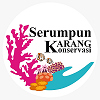The Abundance Megabentos in Coral Reef Ecosystems in the Waters of Gelasa Island, Central Bangka Regency.
DOI:
https://doi.org/10.61548/cmj.v1i2.15Keywords:
Megabenthos , Coral Reefs , Gelasa IslandAbstract
Megabenthos is a group of fauna that inhabits the benthic zone, which is the bottom or substrate of aquatic environments (both infauna and epifauna), with a body size exceeding 10 mm (1 cm). This study aims to analyze the abundance of megabenthos in the coral reef ecosystem, examine the relationship between megabenthos abundance and the physical and chemical parameters of the aquatic environment in the coral reef ecosystem, and analyze the relationship between megabenthos abundance and coral life forms in the waters of Gelasa Island. This research was conducted in September 2022 in the waters of Gelasa Island. Megabenthos data were collected using the Bentos Belt Transect (BBT) method, while coral data were collected using the Underwater Photo Transect (UPT) method. The study identified 10 species of megabenthos in the coral reef ecosystem of Gelasa Island. The species found at the research site include Diadema setosum, Diadema antillarium, Echinothrix calamaris, Drupella cornus, Drupella rugosa, Trochus conus, Tectus pyramis, Tridacna squamosa, Tridacna crocea, and Acanthaster planci. The percentage of live coral cover at the research site ranged from 26.60% to 71.00%. Megabenthos abundance was analyzed using Principal Component Analysis (PCA) to examine the relationship between megabenthos and the physical and chemical parameters of the aquatic environment and the relationship between megabenthos and coral life forms.
Downloads
Downloads
Published
Issue
Section
License
Copyright (c) 2023 Coastal and Marine Journal

This work is licensed under a Creative Commons Attribution-ShareAlike 4.0 International License.

This work is licensed under a Creative Commons Attribution-ShareAlike 4.0 International License.
Copyright Transfer Terms
- The author in submitting online understands that if the manuscript is accepted for publication, the copyright of the manuscript will be given to the Coastal and Marine Journal as the publisher of the journal.
- Copyright includes the exclusive right to reproduce and distribute articles in all forms of media, including reprints, photographs, microfilm and other similar reproductions, as well as their translations.










